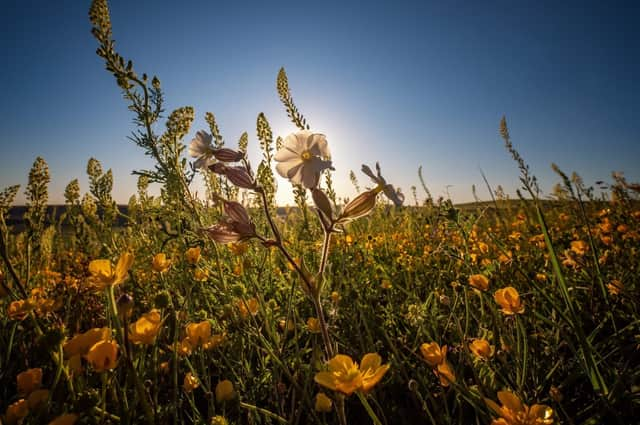Cuttings to be removed from South Downs grass verges to encourage biodiversity


The three-year pilot scheme to help tackle the biodiversity crisis is being spearheaded by a partnership of West Sussex County Council and the South Downs National Park Authority (SDNPA).
The research will focus on the potential benefits of removing grass cuttings, known as arisings, from the grass verges alongside our roads.
Advertisement
Hide AdAdvertisement
Hide AdTraditionally, verges are mown and the grass cuttings are left on the ground to decompose, enriching the soil which encourages coarser grasses to dominate and outcompete any wildflowers.
Removing the arisings means that the soil is not enriched with nutrients. Without the soil enrichment, a variety of wildflowers are able to grow and provide habitat for bees, butterflies and other insects.
The process of removing arisings during cutting, using a special machine-cutting equipment, is being trialled by the county council at verges in the Chichester district of the national park, including Midhurst, Rogate, Bury and Lurgashall.
The national park authority, working with ecological surveyors The Ecology Co-Op, will be leading on the biodiversity monitoring over the next three years. The surveys will look at the impact of the ‘cut and collect’ system on the diversity of flora and fauna.
Advertisement
Hide AdAdvertisement
Hide AdAndy Beattie, a countryside policy manager who is leading the project for the SDNPA, said: “This is a really exciting pilot project to see whether this fairly simple change to how our verges are cut can give nature a real boost.
“There’s strong evidence that pollinators everywhere have struggled in the past four decades, with a recent study showing that a third of British wild bees and hoverflies are in decline. Without action, some of these species that are vital for biodiversity and food production could even become extinct nationally.
“The good news is that grass verges full of wildflowers can act as ‘highways’ for these pollinators, providing much-needed habitat and also linking up their foraging areas.
“We’re looking forward to seeing the results of this trial and seeing how it complements our wider nature recovery strategy for the national park. Wildflower-rich verges could become a real driver for nature recovery and could potentially be an important aspect of our ReNature initiative to create new habitat that is managed for nature.”
Advertisement
Hide AdAdvertisement
Hide AdJoy Dennis, county council cabinet member for highways and transport, added: “I’m looking forward to seeing the results from this pilot scheme which, if successful, could be expanded.
“I know that other local authorities, such as Dorset, have been running cut and collect over several years and found that changing the way grass verges are managed can increase biodiversity significantly.”
Deborah Urquhart, cabinet member for environment and climate change, added: “This is set to be another boost for the county council’s pollinator action plan and our commitment to help conserve the UK’s pollinators. It dovetails perfectly with our other initiatives, such as our community road verges and notable road verges schemes.”
The cut and collect approach can also mean that less grass cutting is needed in the long-term, as grass is not allowed to out-compete all other plants and therefore would not be growing as long.